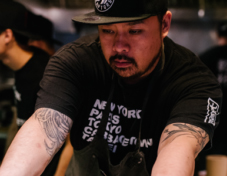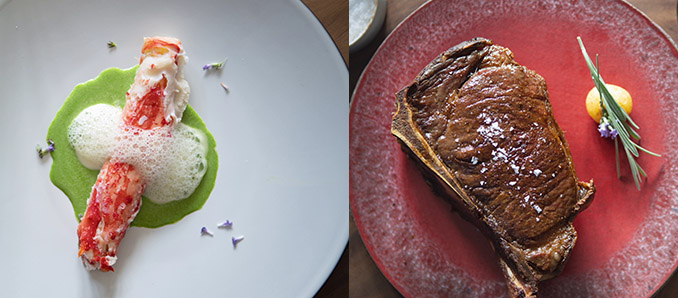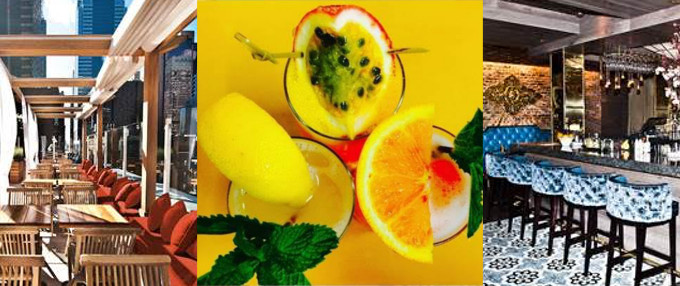Gluten-Free Community is Hungry for New Hotspots
We have the easy recipe to open your doors to fuller tables!
 Picture your restaurant; it’s a typical Saturday night, you have 130 cozy customers already in-house and only a few seats left. A family of three your staff have never seen before walks in, bright-eyed and excited to try your cuisine for the first time. Two of them happily browse the front menu board while the third looks nervous in doing so. After what seems like minutes of intense scanning, you notice this look of defeat on their face, alarming the rest of the family. Suddenly, the discussion amongst them has gone from what to eat to where to eat. They leave.
Picture your restaurant; it’s a typical Saturday night, you have 130 cozy customers already in-house and only a few seats left. A family of three your staff have never seen before walks in, bright-eyed and excited to try your cuisine for the first time. Two of them happily browse the front menu board while the third looks nervous in doing so. After what seems like minutes of intense scanning, you notice this look of defeat on their face, alarming the rest of the family. Suddenly, the discussion amongst them has gone from what to eat to where to eat. They leave.
It’s easy to assume they just didn’t see anything they liked, it happens. In this particular case however, it wasn’t that the individual didn’t want to eat your food, it was that they couldn’t have anything, not even a sandwich. Out of the 133 people in your business at that moment, why couldn’t that one-off individual stay?
Simple; 1 in 133 Canadians are gluten-free due to celiac disease. This does not include those who do it for other health-related reasons which is an additional 29% of the population; a niche comparable to groups who live meat or alcohol-free and are to be taken just as seriously.
It is estimated that the gluten-free foods market will grow over 19.2% annually with Canada and the United States contributing an estimated market share of $6.2B (59%) over the next two years.
While un-servable stragglers aren’t always completely avoidable, it’s important to remember you don’t need to exaggerate your efforts to decrease the odds of losing gluten-free diners. You don’t even have to be a special kind of restaurant to be accommodating enough.
Whether they’re embracing gluten-free for health reasons or by various personal choices, these potential customers aren’t asking you to revamp your entire brand or menu to please their needs. However, by accommodating, even a few items at a time, can open your business to a niche, to an entire community, you might not have known possible before; just ask Toronto’s own Trevor Lui.
In the spring of 2015, Lui opened Kanpai Snack Bar, a Taiwan-inspired, GF-inclusive space in Toronto, Ontario and knew he found something special in having this integration in his menu from the get-go.
“There has been a dramatic increase in the shift of consumer needs in the past few years. Since opening our doors, we have increased the adjustments to our menus, happily tripling our gluten-free offerings to integrate inclusivity in both the kitchen and the bar,” he explained.
“Our understanding and undertaking of the consumer cuisine shift has opened our business up to more and more people who appreciate what we are able to offer because we are able to serve a much broader level of diners and beverage enthusiasts.”
 Notice that Lui’s endorsement of gluten-free adoption isn’t limited to food options. Having a correlating beer or cider option ready in the back of fridge can mean the difference between someone gluten-free having a night of drinks with their friends and sipping water disappointedly.
Notice that Lui’s endorsement of gluten-free adoption isn’t limited to food options. Having a correlating beer or cider option ready in the back of fridge can mean the difference between someone gluten-free having a night of drinks with their friends and sipping water disappointedly.
Another example of introductory adoption could relate to one’s Italian menu. Have at least one gluten-free pasta like Chickapea Pasta stored somewhere in your pantry and you could be hosting a happy family with a happier GF individual who’s thankful to not be stuck eating salad yet again. There is also very little actual inconvenience in these additions. You can easily stash GF alternatives in a small space, freeze GF buns or keep just a few cans of GF beer on hand, just in case.
If you want to go the extra mile, it might be helpful to evaluate your appetizers or decide on a new dessert alternative for those intolerant of gluten-filled flour. These ingredients and kitchen staples are not hard to find as distribution companies, like Neal Brothers Foods in Canada, continue to add lines of gluten-free offerings to their regular nationwide business initiatives.
“The appetite by consumers for gluten-free products has and continues to experience solid growth,” admits Neal Brothers’ President Peter Neal.
So, what should happen next once you’ve received the ingredients and added gluten-free options to your menu?
Consider your on-premise marketing and awareness techniques. Are your hosts and servers well -aware of and educated on these options? Are there callouts on your menus and any front-of-house advertising identifying the existence and selection of gluten-free substitutes?
If questions were asked, would a staff member know what exactly makes a specified dish gluten-free? Can you substitute buns on the burger, or GF dough for the pizza?
Now that your internal awareness campaign is in motion, it’s time to get the word out; become known as that go-to place for gluten-free friends and family to finally have some fun food freedom.
Boost your brand visibility by getting yourself added to various online lists and directories mentioning gluten-free options, for example GlutenFreedom Inc. Make mention of GF options to your social media channels so as to not alienate diners who live a gluten-free lifestyle.
Word of mouth is another powerful way to reach new audiences, especially in the digital age. A recent marketing campaign our agency deployed included an advocacy tweetup held by gluten-removed beer Daura Damm. Over 50 influential contributors got together at Toronto restaurants for dinner and Daura, engaging in group conversation while also posting their involvement in real time on social media. Overall, their tweets reached 248,174 users (638,381 impressions overall) while their Instagram photo posts attained a reach of 123,381 accounts.
Simply put, this is more than just a trend. Gluten-free is, in itself, an open, interactive community; make the right moves and you can easily become a part of it. When a restaurant is accommodating, in small doses or high regard, you’re opening yourself up to increased inclusivity, less stragglers and more than ever before, everyone is free to join in on the food and drinks. Opening the door to this growing market opens your floor to bigger business. Even by changing or adding one item at a time, you have the potential to engage a community you might not have ever known to be possible.
About Rachael Hunt: With a love of discovering new foods accelerated by her gluten-free lifestyle in the past three years, Rachael has taken her passion and made it a staple in both her personal life and in business. In 2013, she founded GlutenFreedom Inc, an online community dedicated to multiple facets of GF living. Rachael has since joined Toronto food marketing agency Branding & Buzzing as head of their Gluten-Free Division.




 About Rachael Hunt: With a love of discovering new foods accelerated by her gluten-free lifestyle in the past three years, Rachael has taken her passion and made it a staple in both her personal life and in business. In 2013, she founded GlutenFreedom Inc, an online community dedicated to multiple facets of GF living. Rachael has since joined Toronto food marketing agency Branding & Buzzing as head of their Gluten-Free Division.
About Rachael Hunt: With a love of discovering new foods accelerated by her gluten-free lifestyle in the past three years, Rachael has taken her passion and made it a staple in both her personal life and in business. In 2013, she founded GlutenFreedom Inc, an online community dedicated to multiple facets of GF living. Rachael has since joined Toronto food marketing agency Branding & Buzzing as head of their Gluten-Free Division. 



